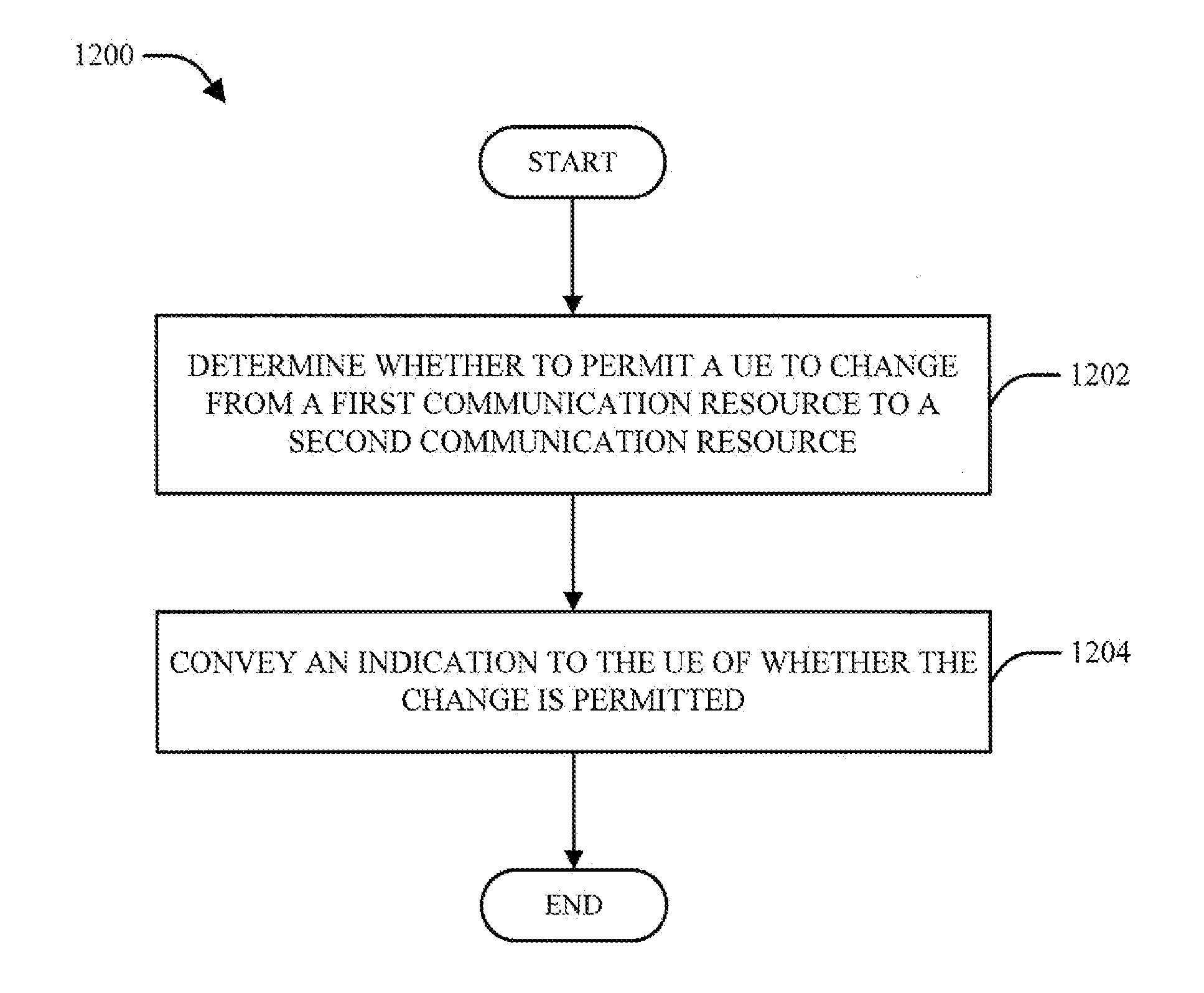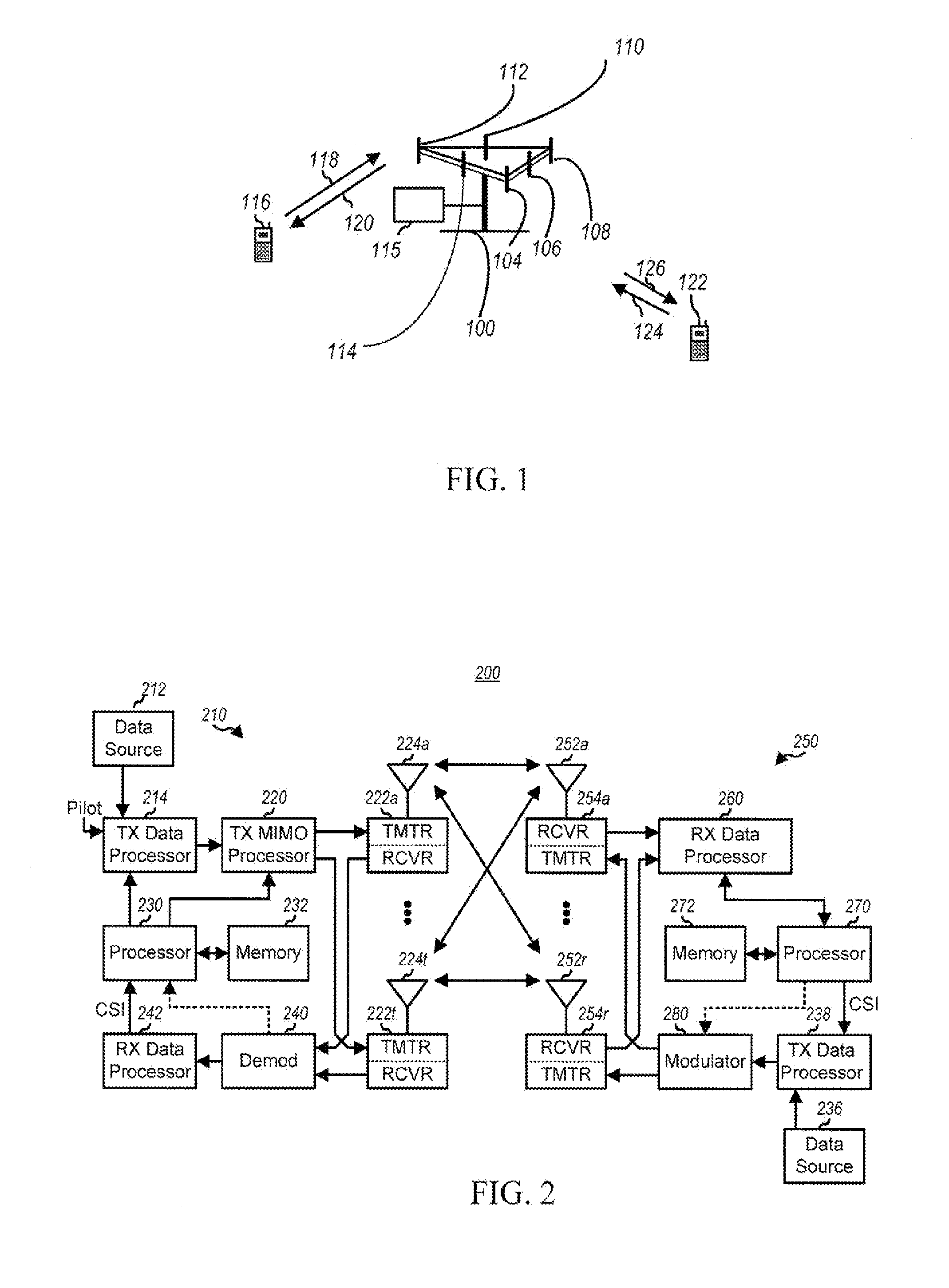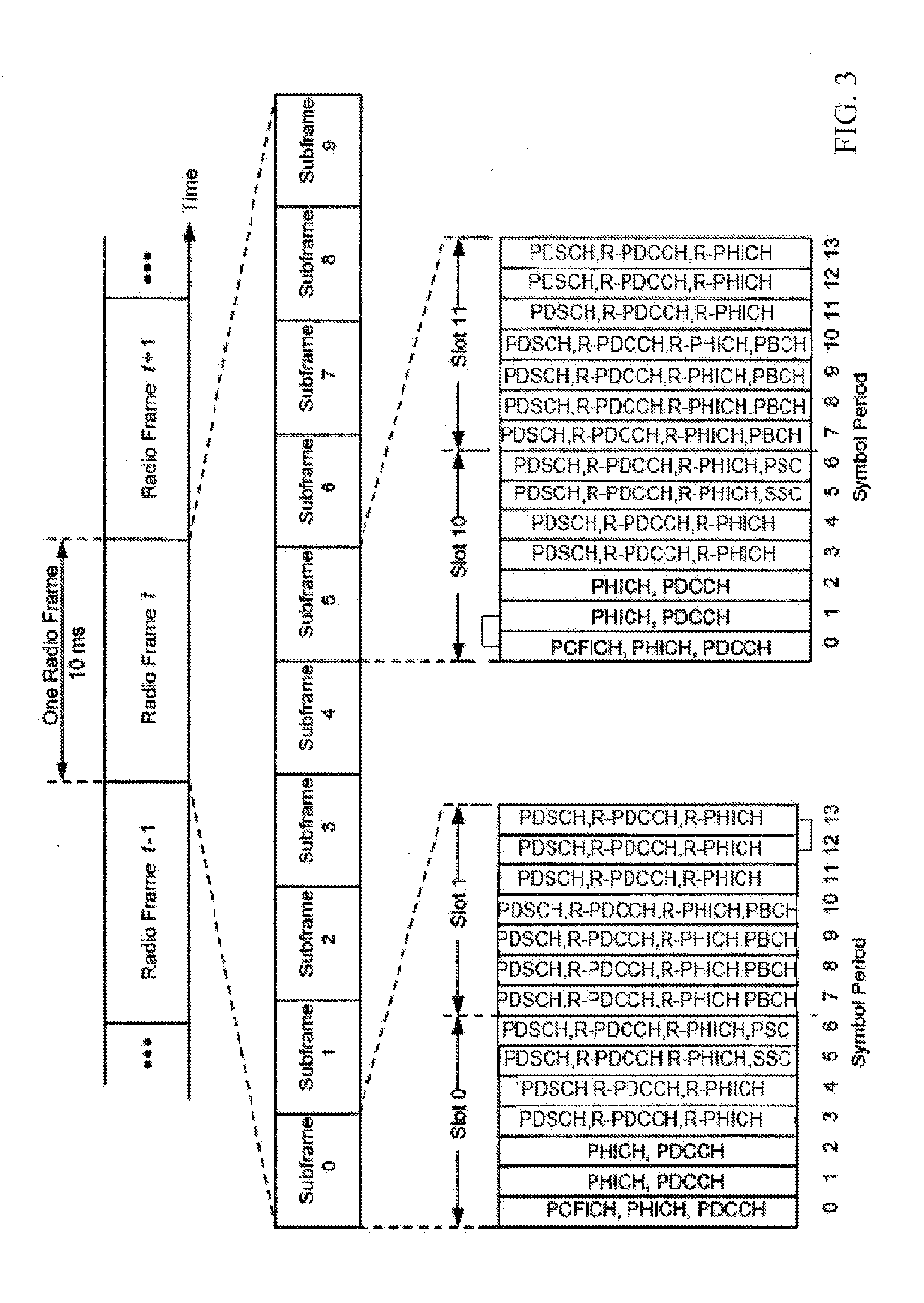Method and apparatus to facilitate support for multi-radio coexistence
a multi-radio and coexistence technology, applied in the field of multi-radio techniques, can solve problems such as inability to support multi-radio devices, interference with the operation of another radio, and inability to support bluetooth error rates,
- Summary
- Abstract
- Description
- Claims
- Application Information
AI Technical Summary
Benefits of technology
Problems solved by technology
Method used
Image
Examples
Embodiment Construction
[0033]Various aspects of the disclosure provide techniques to mitigate coexistence issues in multi-radio devices, where significant in-device coexistence problems can exist between, e.g., the LTE and Industrial Scientific and Medical (ISM) bands (e.g., for BT / WLAN). As explained above, some coexistence issues persist because an eNB is not aware of interference on the UE side that is experienced by other radios. According to one aspect, the UE declares a Radio Link Failure (RLF) and autonomously accesses a new channel or Radio Access Technology (RAT) if there is a coexistence issue on the present channel. The UE can declare a RLF in some examples for the following reasons: 1) UE reception is affected by interference due to coexistence, and 2) the UE transmitter is causing disruptive interference to another radio. The UE then sends a message indicating the coexistence issue to the eNB while reestablishing connection in the new channel or RAT. The eNB becomes aware of the coexistence i...
PUM
 Login to View More
Login to View More Abstract
Description
Claims
Application Information
 Login to View More
Login to View More - R&D
- Intellectual Property
- Life Sciences
- Materials
- Tech Scout
- Unparalleled Data Quality
- Higher Quality Content
- 60% Fewer Hallucinations
Browse by: Latest US Patents, China's latest patents, Technical Efficacy Thesaurus, Application Domain, Technology Topic, Popular Technical Reports.
© 2025 PatSnap. All rights reserved.Legal|Privacy policy|Modern Slavery Act Transparency Statement|Sitemap|About US| Contact US: help@patsnap.com



